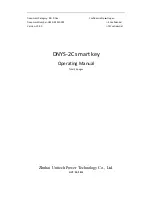
Installation
PRGF-SVN001B-EN
15
Remote Fault Indication
A fault condition can be remotely enunciated by
connecting to module 3A3 at J2-12 (common) and J2-10
(normally open) or J2-11 (normally closed). When a fault
indication occurs the contacts change state. Contact rating
is 120 Vac, 1 Amp.
Figure 11.
Purge component layout back view
Refrigerant Line Connections
The EarthWise™ purge requires refrigerant connections at
four points:
1. Suction gas connection between purge tank and chiller
condenser;
2. Liquid return connection from purge tank and filter
dryer canister to chiller condenser;
3. Purge carbon tank discharge connection for
connecting a vent line to outdoor atmosphere; and
4. Carbon regeneration line from the carbon tank to the
chiller evaporator.
Refrigerant connection sizes and locations are shown in
.
General Recommendations
There are two major points of concern when installing the
EarthWise purge:
1. To insure that all liquid refrigerant returns to the chiller
condenser under all circumstances, whether the chiller
is running or not; and
2. That the purge gas pickup is connected at the
appropriate point on the condenser shell to move
accumulated air to the purge tank. This point is
typically beneath an internal baffle plate inside the
condenser, which may also involve an internal pickup
tube(s). The original purge pickup point is
recommended.
Purge Vapor Line Construction
Important:
Always check the chiller model number and
condenser shell nameplate to determine if it
is an ASME vessel. If it is, all applicable
ASME and local codes concerning repairs to
ASME rated vessels must be followed.
The purge vapor line which runs from the chiller
condenser to the purge tank must be constructed of 5/8”
refrigerant-grade copper tubing and designed for the
lowest possible pressure drop. The vapor line should be
insulated to minimize condensation in the line.
The shutoff valve provided on the chiller, typically an angle
or solenoid valve, must be replaced with the 5/8” ball valve
provided in the optional conversion kit. The valve should
be located as close to the condenser as possible.
Model CVHE and later-vintage CVHB Trane chillers have 1/
2” NPT connections, which can easily be configured for the
5/8” valve. However, Model PCV, CV, OCV, LCV, CVHA and
early CVHB Trane chillers have 3/8” NPT vapor
connections. In these cases, the larger coupling provided
with the kit should be welded over the existing 3/8” NPT
port.
Note:
A minimum 1/2” (13 mm) inside diameter must be
maintained throughout the entire vapor line.
Some smaller CFC-113 Model PCV and LCV Trane chillers
have a 1/4” NPT condenser purge connection. In these
cases, the 1/4” coupling must be removed and replaced
with the larger one provided with the new purge.
Carbon Regeneration Line
The 1/4” copper tubing and valve are field supplied and are
not included in the loose parts box. The connection for the
regeneration line to evaporator may be different
depending on which chiller the purge is installed on. The
connection to the evaporator should be above the liquid
line of the evaporator, and must be installed if there is no
existing connection. Maintain a slope for the entire length
of the copper tubing back to the evaporator. The valve for
the regeneration line must be fully open when the system
is in operation.
Other Considerations
•
Maintain a minimum of a two-inch per foot (150 mm/
m) slope (pitch) for the entire length of the vapor line
to allow any liquid that may accumulate in the line to
drain back to the condenser.
•
Avoid vertical runs over six (6) inches (152 mm).
•
Use long-radius bends in the tubing wherever possible
to avoid excessive pressure drop.
•
The 5/8” ball valve must be fully open when the system
is in operation.
Liquid Return Line
To obtain proper liquid refrigerant return, the pressures at
the condenser vapor pickup point and at the liquid return
Suction Gas Line
to Condenser
1/4” Carbon Regeneration
Line to Evaporator
3/8” Exhaust Line
to External Vent
Summary of Contents for EarthWise Purge
Page 19: ......






































